Description
Small 4 Watt Fungus Gnat/Insect killer Lamp
Where do they come from??
First you see one Fungus Gnat. You might even manage to catch that one. But then you see another. Then another and another. Despite your efforts, those little pesky flies have managed to squeeze through the polyfil in your mono tubs breather holes. You now have Fungus Gnats walking there contaminated little feet all over your freshly colonised mycelium. In a panic, you rush off to the hardware store. Returning with fly paper and sticky sheets. Your frustration only grows as the super sticky fly paper seems to like you and your lab coat more than attract and adhere the flies. But….
You persevere with the purpose built product as you are catching flies… But not enough. You even go to the length of hanging fly paper inside the mono tub as your now desperate for the little flies to just leave your mush-efforts alone. As times grows on. The Fungus gnat population explodes and so does any hope of 2nd flushes or contamination free spore prints. The Fungus gnats will lay larvae in your mycelium and eat through cap veils to explore the spore laden gills of your fruits.
You search the internet in vain. All the guidance you find talks about gardens not fruiting rooms. You read on almost able to hear to gnats munching away. Mentions of spray chemicals and your now close friend, The ever sticky fly paper. Do not loose hope tho.
The other much more interesting way of dealing with Fungus gnats and other unwanted insects uses electric shock therapy to gently persuade the flies that drying up and dying in their own shell is a much better life goal than eating and contaminating your mycelium.
On contact with the electrified inner grill. 2300v of electricity is ready to pass through the body of any Fungus gnat or insect that comes into range of the Ultra Violet Led lighting system. The 4 Watt Led glow reaches 360 degrees and will protect a small Mush-space upto a max of 10m2. Luring all flying beasties with addictive quality into the electrifying grills surrounding the light. Do not worry. Human fingers can not get hurt as there is a safety grill to prevent harm.
Plug in and switch the system on. Within a short time and with a crackle. Your Fungus gnat problems start to disappear in a puff of smoke.
Using no chemicals and being safe for human use. Electric fly zappers are the way forward flying pest control.
Low power consumption and removable fly body collection tray make this model easy to use and cheap to run long term. It is commonly known that leds have a life of about 50,000 hrs or 5.7 years of continuous use.
Being only: 18 x 11.2 x 7.6 cm in size means the unit can be hung anywhere as long as anywhere is INDOORS
If you like a good read, Please continue.
First: A history of bug zappers.
Secondly: The life of Fungus gnats.
Thirdly: Bug Zapper tubes.
In its October 1911 issue, Popular Mechanics magazine had a piece showing a model “fly trap” that used all the elements of a modern bug zapper, including electric light and electrified grid. The design was implemented by two unnamed Denver men and was conceded to be too expensive to be of practical use. The device was 10 by 15 inches (25 by 38 cm), contained 5 incandescent light bulbs, and the grid was 1⁄16-inch (1.59 mm) wires spaced 1⁄8-inch (3.17 mm) apart with a voltage of 450 volts. Users were supposed to bait the interior with meat. Ewww
According to the US Patent and Trademark Office, the first bug zapper was patented in 1932 by William M. Frost.
Separately, Dr. William Brodbeck Herms (1876–1949), a professor of parasitology at the University of California, had been working on large commercial insect traps for over 20 years for protection of California’s important fruit industry. In 1934 he introduced the electronic insect killer that became the model for all future bug zappers. Wow 20 years. He must of really disliked getting stuck up in fly paper.
The Life of the Fungus Gnat
The Larvae of most species feed on Fungi. In the gardening world the fungi is usally found growing on soil, helping in the decomposition of organic matter. In the Mushroom world we literally grow the food they live on. Interestingly some species are predatory, including those in the genus Arachnocampa of the family Keroplatidea – the “glowworms” of Australia and New Zealand. Sounds scary right.
Flying Fungus gnats adults are 2–8 millimetres (0.08–0.3 in) long, and are occasionally pollinators of plants and carriers of contaminant spores and diseases such as pythium.
Most fungus gnats are weak flyers and can often be seen walking rapidly over mycelium and fruits alike. This predisposition to walking verses flying unfortunately only helps to spread contamination. However when airborne, the gnats may be quite annoying to humans by flying into their faces, eyes, and noses, both indoors and outdoors. Keen gardeners will know these pests from growing carrots.
Hardiness of the fungus gnat.
Some fungus gnats are exceptionally hardy, being able to tolerate cold conditions through their possession of antifreeze proteins. Typically, overwintering organisms can either avoid freezing or tolerate freezing, but Excechia nugatoria can do both. For E. nugatoria, the production of noncolligative antifreeze proteins (NAPs) protect the head and thorax from freezing, but they do not protect the abdomen. Freezing of the head and thorax in other insects tends to have adverse effects on neural tissue, so it is not surprising that these protective mechanisms have been observed in certain species, but E. nugatoria is the only insect known to semi-freeze through the winter. By allowing the abdomen to freeze, evaporative water loss is reduced over the course of the winter. Bad Boys. The type of fungus gnat we commonly find in the mush-room has been able to live and feed from the warmth and food in your home.
Garden Management techniques from Wiki. That wont work in the mush-box.
Fungus gnats in the family Sciaridae may be pests. They are typically harmless to healthy plants – and humans – but can inflict extensive damage to seedlings; their presence can indicate more serious problems. In houseplants, the presence of sciarids may indicate overwatering; they may be feeding on roots that have been immersed in water too long and are thus rotting, or the gnats may be attracted to fungus growing in saturated topsoil. Consequently, allowing the soil to dry may reduce their numbers.[8] The pests are sometimes also managed by placing a layer of sand[9][10] or indoor mulch on top of the soil around plants; by introducing Hypoaspis miles mites or applying the biological larvicide Bacillus thuringiensis (var. israelensis) to kill gnat larvae; by drenching the soil annually in an insecticidal soap. then applied to the soil.[4][5] Adults can be trapped with yellow sticky traps made of yellow card stock or heavy paper coated in an adhesive since the adults are attracted to the color yellow.[11][12]
Since the gnats are weak fliers, fan-based traps as well as other fly-killing devices may be used to help control free-flying gnats, especially indoors. There are a number of toxic and non-toxic methods of controlling sciarids and their larvae, including nematodes, diatomaceous earth, or powdered cinnamon.[4]
Commercial greenhouses typically employ the insect growth regulator diflubenzuron for control of fungus gnats and their larvae. It is applied to infected soil and will kill fungus gnat larvae for 30-60 days from a single application. Its mechanism of action is to interfere with chitin production and deposition and it also triggers insect larvae to molt early without a properly formed exoskeleton, resulting in the death of the larvae. Although it is targeted at fungus gnat larvae, care should be taken in applying it as it is highly toxic to aquatic invertebrates. Diflubenzuron typically has no toxic effect on adults; only the larvae are affected. [13][14]
This line may be of interest to any one who likes to treat rather than prevent. This is from wiki not me.
” Hydrogen peroxide can be mixed with water and used to kill fungus gnat larvae in infected soil with a mixture of one part 3% hydrogen peroxide mixed with four parts water”
To an end to Fly problems and beyond…
Bug zapper tubes. From wiki:
Another class of UV fluorescent bulb is designed for use in “bug zapper” flying insect traps. Insects are attracted to the UV light, which they are able to see, and are then electrocuted by the device. These bulbs use the same UV-A emitting phosphor blend as the filtered blacklight, but since they do not need to suppress visible light output, they do not use a purple filter material in the bulb. Plain glass blocks out less of the visible mercury emission spectrum, making them appear light blue-violet to the naked eye. These lamps are referred to by the designation “blacklight” or “BL” in some North American lighting catalogs. These types are not suitable for applications which require the low visible light output of “BLB” tubes[11] lamps.

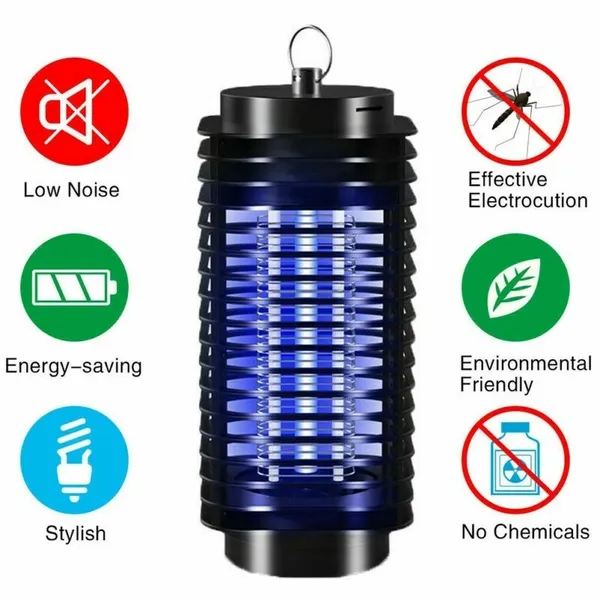
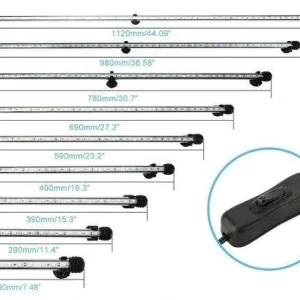
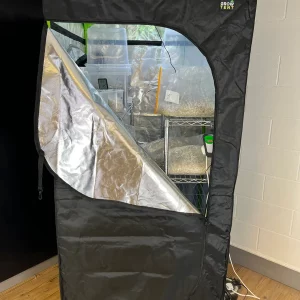
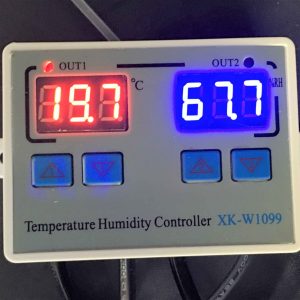
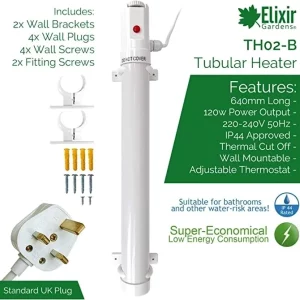
Reviews
There are no reviews yet.